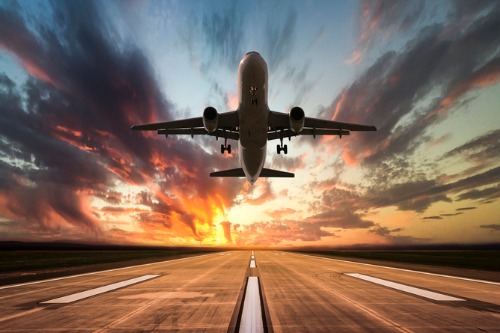

The global airline industry has experienced some of its safest years in terms of fatalities recently, despite a number of crashes, according to a new study – but long-term improvement of its risk management record is challenged by a growing number of claims and risks.
According to the study, the airline industry has seen heightened loss activity from more costly repairs and engine claims, damage from foreign objects such as bird strikes, ground collision incidents, slips and falls, fleet groundings, mis-fueling incidents and liability awards.
“Thankfully, fatal air accidents involving the modern generation of commercial aircraft are infrequent, and the past few years have been among the safest ones in aviation history,” said Tom Fadden, global head of aviation at AGCS. “However, the headline improvements in safety shouldn’t lull the aviation industry into a false sense of security. The sheer volume and magnitude of aviation losses is often underestimated. At any time, Allianz alone will handle thousands of claims, and be it grounding incidents or collisions with drones, there are also many new risks on the horizon which airlines, manufacturers and airports have to prepare for.”
The report analysed more than 50,000 aviation insurance claims, worth more than US$16.3 billion, made between 2013 and 2018. It revealed that collision and crash incidents accounted for 57% of the value of all claims – equivalent to US$9.3 billion – and 27% of claims by number. The report projected that more costly grounding incidents, business interruption resulting from cyber and drone events, and more incidences of turbulence will have an influence on the loss landscape.
“Overall, aviation insurance claims are increasing in frequency and severity, driven by higher values of aircraft, increased repair costs and rising liability awards for crash victims,” said Dave Warfel, regional head of aviation for North America at AGCS. “The volume of claims is also a reflection of growth in air transport, with increased passenger numbers and more congested airports, as well as growing demands on airlines, manufacturers and ground services.”
The fact that crashes and collisions are the top causes of aviation claims isn’t driven only by major aviation disasters, AGCS said. Such claims also include incidents like hard landings, bird strikes and incidents on the ground. The average runway incident claim, for example, totals about US$1.9 million. Faulty workmanship or maintenance is the second top cause of claims, followed by machinery breakdown.
Modern aircraft can also be more expensive to repair, contributing to costlier claims. Increasing complexity in aircraft design, technology and manufacturing is also leading to more costly grounding incidents, sometimes involving entire fleets, AGCS said. The redesigned Boeing 737 Max, for example, remains grounded following two fatal crashes within five months in 2018 and 2019.
“Such incidents highlight the challenge in finding technical solutions to complex problems, which increases the time it takes to get grounded aircraft back into operation,” Warfel said. “Civil aviation and airline safety authorities have grown increasingly cautious, and rightly so. However, this will likely result in more – and longer – groundings of aircraft in the future.”
Liability claims per passenger are also increasing, with many plaintiffs seeking higher awards. With potential awards per passenger reaching millions of dollars, a major crash could result in a liability loss of up to US$1 billion in the future, the report said.
The report also warned of a range of emerging risk scenarios. For example, the projected demand for new pilots – about 800,000 over the next 20 years, double the current workforce – brings challenges in recruitment and training, the report said. And a number of recent accidents have raised concerns that pilots are over-reliant on aircraft automation systems. Incidents of turbulence are also predicted to increase due to climate change, with the North Atlantic flight passageway projected to see the largest increase. Extreme turbulence can cause structural damage to an aircraft, which can cost millions of dollars. The growing number of drones and cyber risks such as data breaches, system outages and hacker attacks are also predicted to have a significant impact on aviation loss.
Accidents on the ground could increase as well, according to the report. In many cases, airport infrastructure hasn’t kept up with the rapid growth in passenger and aircraft numbers, and it is predicted that most of the world’s busiest airports will face capacity issues within a decade. Ground congestion causes delays, and also increases the risk of collisions and ramp accidents, AGCS said.
On a more positive note, the report highlighted the ongoing decline in the number of fatal accidents over the past 60 years – a period when the number of passengers has skyrocketed. Between 2008 and 2017, there were 2,199 fatalities from 37 commercial passenger fleet jet events globally – less than 8% of the total number since 1959. In 2017, for the first time in at least 60 years, there were no fatalities on a passenger jet flight, and 2018 ranks as the third-safest year ever, with 2015 in second place.
